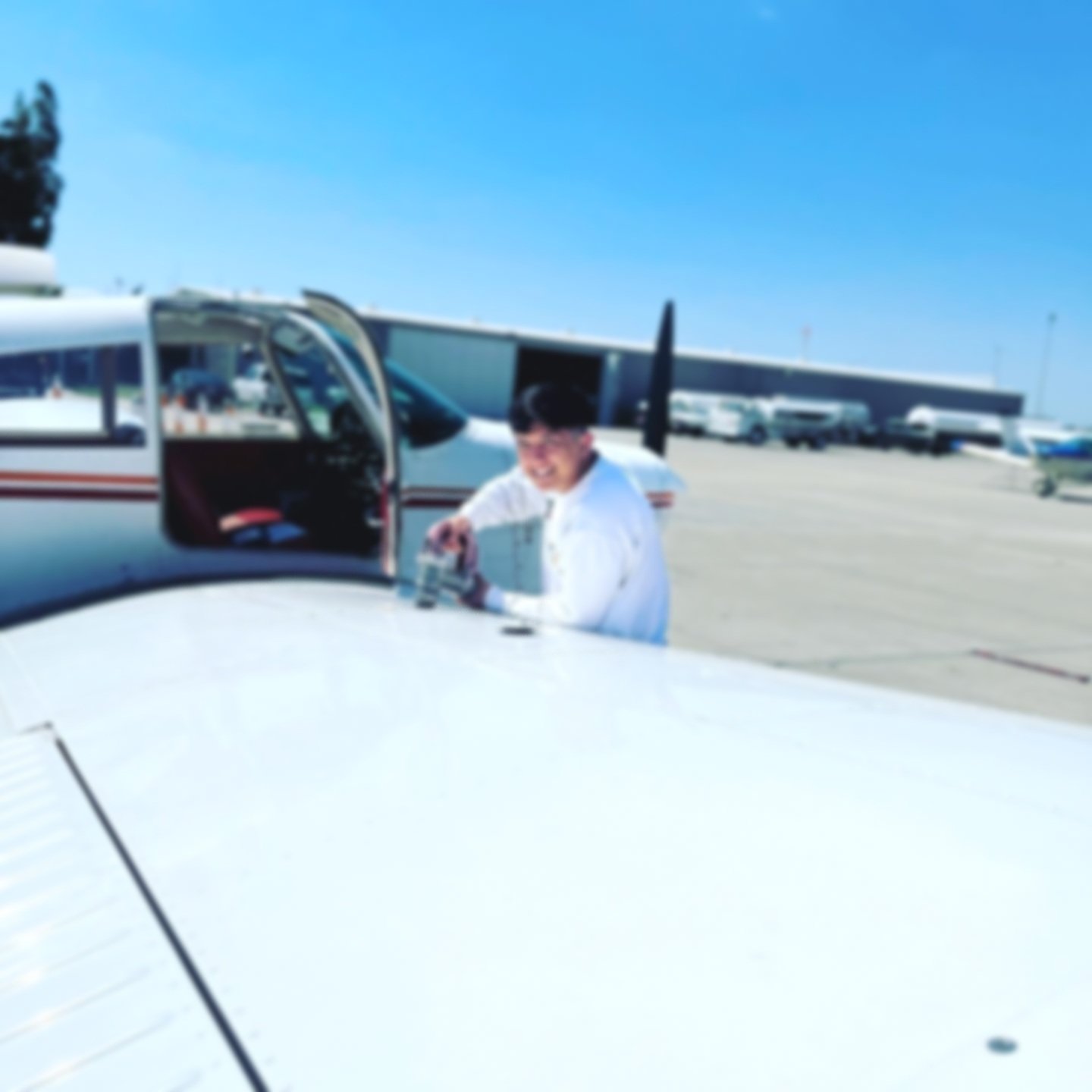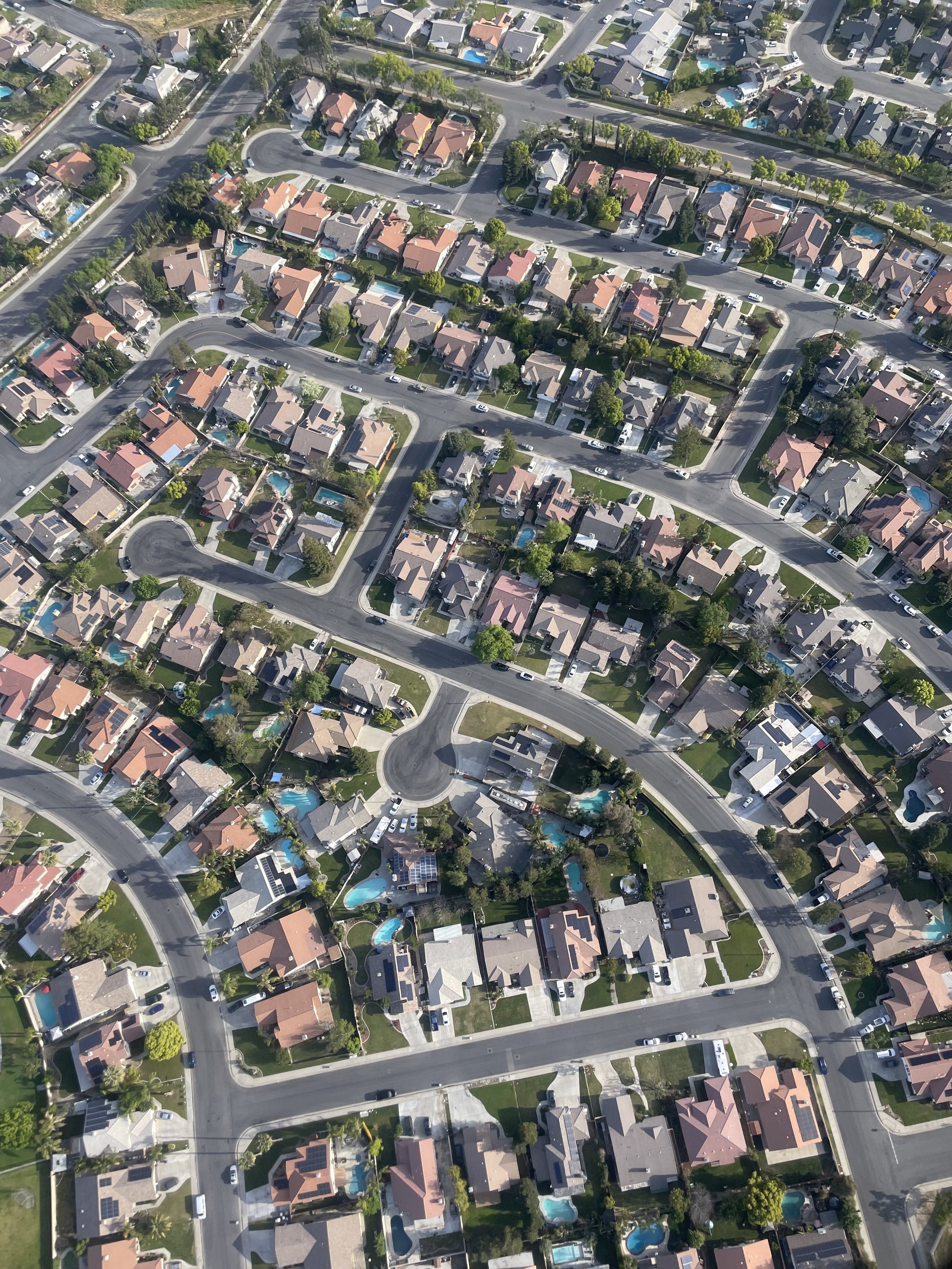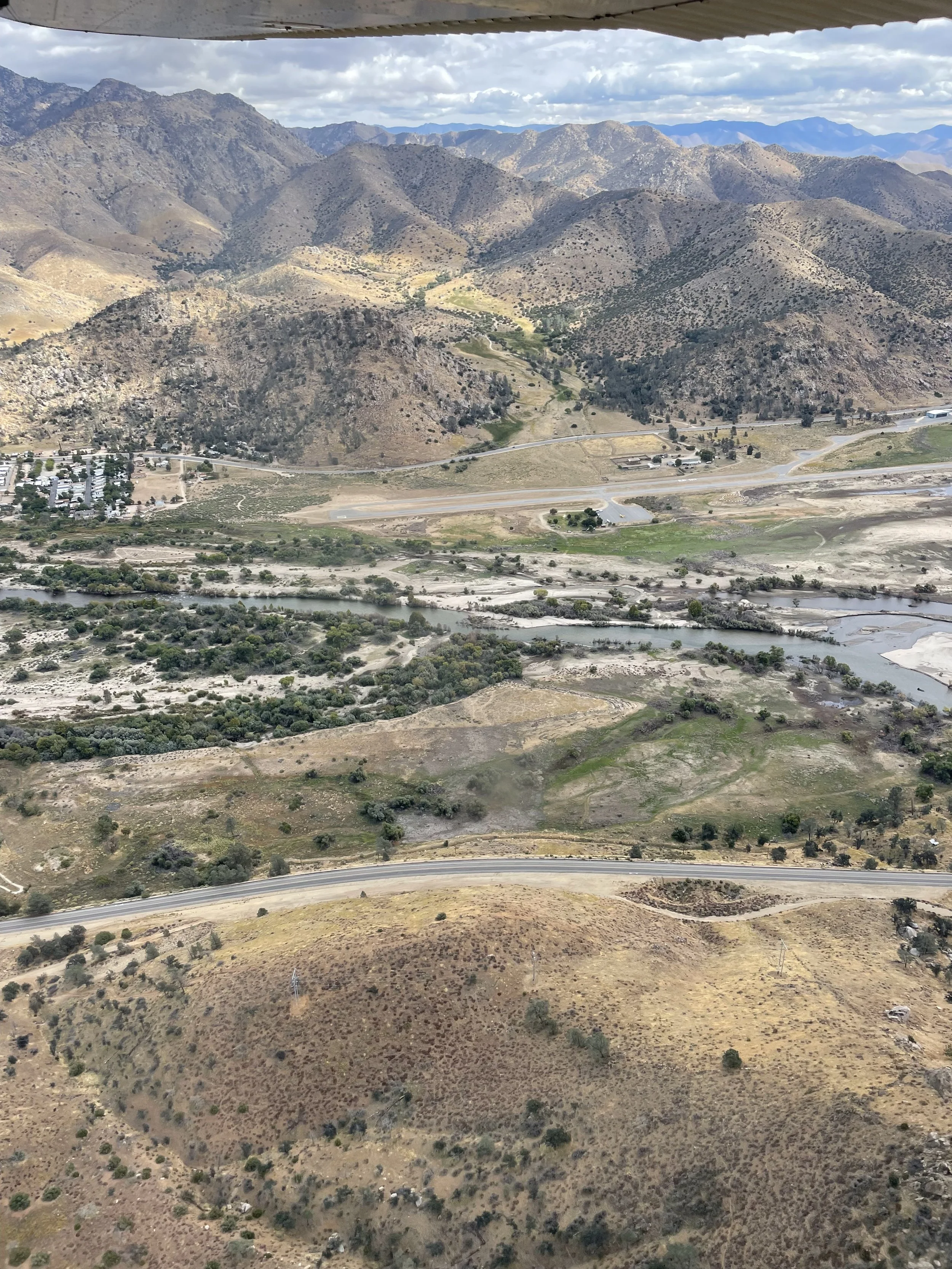
Private Pilot License
A Private Pilot License is a license to fly an aircraft. This license is great for flying friends and family. Some people get this license so they can travel as pilots with more than one person. Other people get this license because it is the first step in their career of flying.
Become a Private Pilot
Unlike driving, where almost everyone has grown up watching people drive on a day-to-day basis, people do not get this same experience from flying. In fact, most of our students did not personally know anyone who flies planes. Flying is a new experience for some people, so it can take more than one lesson to really start feeling comfortable while flying.
Switching from Sport to Private
If you are training as a Sport Pilot and would rather be a Private Pilot, we can incorporate your previous flight hours and skills into your Private Pilot training. People may want to change from Sport Pilot to Private Pilot because a Private Pilot has less limitations.
Unfortunately, we do not offer Light Sport Aircraft training at this time.
Pilot Eligibility
TSA Requirement
For US Citizens, you must bring a Birth Certificate & Driver’s License or a Passport to your first lesson.
For non-US citizens, we will need prior approval from TSA to begin training. If you would like more information on this process, please click here.
Language Requirement
English is the established universal language for all pilots. Students must be able to read, write, and speak English proficiently.
Age Requirement
There is no age requirement for training. However, there are some important age restrictions to consider:
Student must be at least 16 years old to go on a Solo Flight (a flight where the instructor is not in the plane) .
Student must be at least 17 years old to obtain a private pilot license.
Medical Certificate
Students are required to obtain a medical certificate to become a private pilot. We recommend that you get your medical before you begin training. To get a medical certificate, you will need to see an Aviation Medical Examiner (AME).
There are three different medical certificate classifications:
-
Designed for Airline-Transport Pilots. We recommend this for students who want a career in aviation.
-
Designed for Commercial Pilots (ex: Chartering Jets, Ferrying Planes, etc)
-
Minimum required certificate for flight training. Private, Instrument, Commercial, and Flight Instructor pilots can fly with a third class certificate.
Please note: this is a summary to help give you a better understanding of the requirements. For in-depth information, visit the faa website.
Training Requirements
Students must complete 40 hours of flight time to earn their private pilot license. The national average students take to complete their training is 70 hours, but we estimate our students take around 55 hours.
-
(Dual Instruction is flight time where an instructor is in the plane with you.)
• 3 of those hours must be Cross Country
• 3 of those hours must be Night Cross Country
• 10 of those hours must be Night Takeoffs and Landings
• 3 of those hours must be Instrument
• 3 of those hours must be Checkride Prep
-
(Solo Flight Time is flight time where an Instructor is not in the plane with you.)
• 5 of those hours must be Solo Cross Country
• 3 Solo Takeoffs and Landings at a Towered Airport
-
• May be Solo or Dual Instruction flight hours
• (Most of the time these hours are completed as dual instruction)
Knowledge Test
Similar to the DMV’s driving test, students must complete a 60-question multiple choice Knowledge Exam before their Checkride to obtain their Private Pilot License.
You must take this test and pass with a 70% or higher. You can take this test at any time during your training. We recommend taking this test after you solo.
Checkride
A checkride is similar to the driving part of the the DMV’s driving test. Once your instructor completes your training, he will endorse you to take your checkride. A Designated Pilot Examiner (DPE) will do an oral exam and practical flight test to assess your skills as a pilot. Once you pass your checkride, the DPE will issue your pilot’s license.
Frequently Asked Questions
-
Your training depends on your time, skills, and dedication. It also depends on which plane you rent for your training and what added expenses you choose to purchase.
We created a Cost Analysis for each aircraft on a High and Low End to give you an estimation on how much you will spend to get your private pilot license.
Reach out to us, and we would be happy to send that packet to you!
-
I’m glad you asked! Robbins Flight Training partnered with Flight Training Finance if you need help financing your training. Please see our financing page for more details.
Also, we are a pay-as-you-go company, so we are not expecting you to pay for your entire license in one payment.
In terms of your career In aviation, one of the best ways to offset the cost of your flying is to instruct! Becoming a CFI allows you to get paid to build your flight hours. We recommend this to anyone wanting to have a career flying planes commercially.
-
You can search AME’s near you! If you are in Bakersfield or Shafter, we recommend the following:
Michael L. Komin, MD (Only Accepts Cash Payments) // 1150 E Lerdo Hwy Suite C // (661) 630-5890
Jan H. Trobisch, MD (Synergy Wellness Center) // 7910 Downing Ave. #100 // (661) 878-9100
-
The FAA Guide ENR 1.15 gives an in-depth guide including medical conditions that can hinder you from getting a medical certificate.
Pilots who do not meet medical standards may still be qualified to fly under special issuance provisions or the exemption process.
If you have any questions that pertain to your specific medical condition, reach out to us. We are happy to discuss it with you.
We always recommend getting your medical certificate before you start training, especially if you might not qualify.
Have a question we haven’t covered? Chat with one of our certified flight instructors!
Training Books and Resources
You can begin training at any time, even before you start flying. In fact, you can save money by studying before and between lessons.
-
FAA medical certificate requirements and information. https://www.faa.gov/licenses_certificates/medical_certification/get/
-
Sporty’s is an online ground school that provides you with the training and practice tests needed to get your private pilot.
-
Foreflight is an online subscription that provides you with charts, documents, and a digital logbook that you can use as pilot. We recommend the Pro Plus Plan.
-
FAA-S-ACS-6B
-
-

The best place to start is in the air!
Still on the fence about flying? Do you know that you want to be a pilot but don’t know where to start?
Book a discovery flight today to meet our chief instructor and see what it’s like to fly. One of the biggest fears about starting a new adventure is the fear of the unknown. If you are still unsure whether our program is the right fit for you, call or text us to book a discovery flight. A Discovery Flight is a safe introduction where you will learn the basics of flying in a hands-on approach.
Private Pilot Rules and Regulations
These are the Requirements and Limitations provided by the FAA. Visit the FAA website for more information.
Requirements
You must be proficient in English. Example: Be able to read, write, and understand English. This can be verified by having a conversation when I help you get your student pilot certificate.
Be at least 17 years old to get your private pilot certificate.
Proof of Citizenship OR TSA approval prior to beginning your training (Current Passport or Current Driver’s License AND Birth Certificate). TSA is only if you aren’t a current U.S citizen.
A Minimum of 40 hours of flight training: 20 hours of dual instruction from an authorized instructor like we have here, 10 hours solo flight training.
You will also need to have at least a 3rd class medical certificate which you can get from an Aviation Medical Examiner (AME). You can find an AME by googling AME near me; it’s just a fancy way of saying “aviation doctor.”
Pass the written Knowledge exam with 70% or better. This is like taking your driver’s license knowledge test but for a plane and flight rules.
Pass the Practical check ride with an FAA Examiner. A practical test consists of talking to the Examiner on the ground. If you are well prepared this can be as short as an hour. After that you guys get in the airplane and he will test your skills in the plane.
Training Requirements
A minimum of 40 hours of flight time:
20 hours dual instruction. This is just instruction with a flight instructor in the airplane.
10 hours of solo flight training in the areas listed in 61.107(b), This is flight in the airplane by yourself.
Training must include:
3-hours of cross-country flight. This is a flight more than 50 Nautical miles.
3 hours of flight training at night in a single engine airplane that includes:
1 cross-country flight over 100 nautical miles total distance.
10 takeoffs and landings to a full stop at an airport. (Each landing involving a flight in the traffic pattern)
3 hours of flight training in a single engine airplane on the control and maneuvering of an airplane solely by looking inside at the instruments 61.109(a)(3).
10 Takeoffs and landings to a full stop, A full stop is a landing where you exit the runway then taxi back to the runway to take off.
One solo cross-country flight of at least 75 nautical miles total distance with a full stop landing at a minimum of two points and one segment of the flight consisting of a straight-line distance of at least 25 nautical miles between takeoff and landing spots.
3 hours of flight training preparing for the practical test, which must have been performed within the last 2 calendar months.
10 hours of solo flight time in a single engine airplane consisting of:
5 hours of cross-country time.
One solo cross-country flight of 150 nautical miles. More details for this are in 61.109(a)(5).
3 takeoffs and landings to a full stop at an airport with an operating control tower. (Each landing involving a flight in the traffic pattern)
Limitations 61.113
No person who holds a private pilot certificate may be pilot in command of an airplane carrying passengers or property for compensation or hire.
A private pilot may act as pilot in command of an aircraft for any business or employment if:
The flight is only incidental to that business or employment.
The airplane doesn’t carry passengers or property for compensation or hire.
A private pilot must pay the pro rata share (at least the majority) of a flight with passengers including the fuel, oil, airport expenditures, or rental fees.
A private pilot can fly for charity.
A private pilot can be reimbursed for aircraft operating expenses for search and rescue purposes.
A private pilot who is an aircraft salesman must have 200 hours of logged flight time to demonstrate an aircraft in flight to a buyer.
A private pilot can tow a glider.
A private pilot can conduct a production flight test in a light sport aircraft intended for certification.
A private pilot can fly with a basic med as long as they meet certain requirements.








